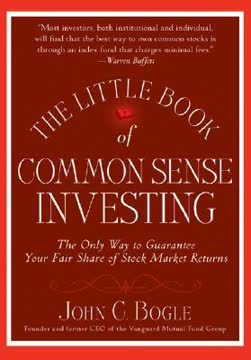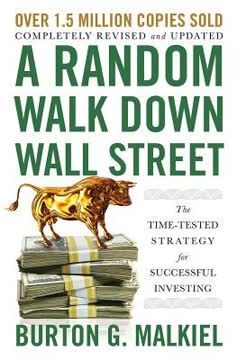نکات کلیدی
1. مغز شما دو سیستم رقیب برای تصمیمگیری مالی دارد
"مغز سرمایهگذاری فقط جمع و ضرب نمیکند و تخمین نمیزند. وقتی شما برنده، بازنده یا در معرض خطر پول قرار میگیرید، برخی از عمیقترین احساساتی را که یک انسان میتواند تجربه کند، برمیانگیزد."
پردازش دوگانه مغز. تصمیمات مالی ما از دو سیستم مغزی متمایز ناشی میشود: سیستم انعکاسی (احساسی) و سیستم بازتابی (تحلیلی). سیستم انعکاسی بهسرعت و بهطور غریزی عمل میکند، در حالی که سیستم بازتابی اطلاعات را بهطور دقیقتر و منطقیتر پردازش میکند. این سیستمها بهطور مداوم با یکدیگر رقابت میکنند و تنش داخلی را در هنگام انتخابهای مالی ایجاد میکنند.
مکانیسمهای تصمیمگیری مغز:
- سیستم انعکاسی بهطور آنی به پاداشهای بالقوه پاسخ میدهد
- سیستم بازتابی پیامدهای بلندمدت را تحلیل میکند
- مدارهای احساسی میتوانند بر استدلال منطقی غلبه کنند
- پاسخهای سریع و شهودی معمولاً پیش از تفکر آگاهانه رخ میدهند
تعامل عصبی. درک این دینامیک داخلی به سرمایهگذاران کمک میکند تا تشخیص دهند که چه زمانی امیال احساسی ممکن است تصمیمگیری منطقی را مختل کنند. با توسعه آگاهی از این سیستمهای رقیب، افراد میتوانند استراتژیهایی برای تعادل بین پاسخهای احساسی و تفکر تحلیلی ایجاد کنند.
2. پیشبینی سودها هیجان بیشتری نسبت به سودهای واقعی ایجاد میکند
"پول درآوردن حس خوبی دارد، اما به اندازه انتظار برای پول درآوردن حس خوبی ندارد."
مکانیسمهای پاداش عصبی. مغز انسان در انتظار سودهای مالی بالقوه، لذت بیشتری را تجربه میکند تا در زمان دریافت واقعی آنها. تحقیقات علوم اعصاب نشان میدهد که هسته اکومبنس در زمان انتظار برای پاداش بیشتر فعال میشود تا در زمان دریافت واقعی پاداش.
دینامیکهای روانشناختی:
- تصور ثروت بالقوه پاسخهای احساسی قویتری ایجاد میکند
- سیستم دوپامین مغز بیشتر تحت تأثیر سودهای بالقوه قرار میگیرد
- انتظارات معمولاً هیجانانگیزتر از نتایج واقعی احساس میشوند
- این پدیده توضیح میدهد که چرا بلیطهای قرعهکشی و سرمایهگذاریهای سفتهبازانه همچنان جذاب هستند
چشمانداز تکاملی. این ویژگی عصبی احتمالاً بهعنوان یک مکانیزم بقا توسعه یافته است و اجداد ما را به دنبال پاداشهای بالقوه ترغیب میکند و انتظار را لذتبخشتر از خود سود میسازد.
3. انسانها بهطور ذاتی در پیشبینی ریسکهای مالی دچار اشتباه میشوند
"ما تمایل داریم احتمال وقوع یک رویداد را بر اساس سهولت یادآوری آن قضاوت کنیم."
اشتباهات در درک ریسک. انسانها بهطور سیستماتیک ریسکهای مالی را بر اساس برداشتهای احساسی بهجای احتمالات آماری قضاوت میکنند. مغز ما بهگونهای طراحی شده است که بیشتر به رویدادهای زنده و بهیادماندنی پاسخ میدهد تا به دادههای آماری انتزاعی.
چالشهای ارزیابی ریسک:
- رویدادهای دراماتیک و نادر احساس میشوند که احتمال بیشتری دارند
- تجربیات اخیر بهطور نامتناسبی بر ارزیابیهای ریسک تأثیر میگذارند
- مدارهای احساسی بر محاسبات تحلیلی ریسک غلبه میکنند
- افراد بهطور مداوم ریسکهای غیرمحتمل را بیش از حد برآورد و خطرات رایج را کمتر از حد برآورد میکنند
سوگیریهای شناختی. درک این محدودیتهای ذاتی شناختی میتواند به سرمایهگذاران کمک کند تا رویکردهای سیستماتیک و مبتنی بر داده را برای ارزیابی ریسکها و فرصتهای مالی توسعه دهند.
آخرین بهروزرسانی::
FAQ
What's Your Money and Your Brain about?
- Neuroeconomics Focus: The book explores how neuroscience, psychology, and economics intersect to influence financial decision-making. It introduces neuroeconomics to explain why investors often act against their best interests.
- Emotional Influence: Emphasizes the role of emotions like fear, greed, and confidence in investing behavior, often leading to irrational decisions.
- Self-Understanding: Aims to help readers understand their own investing behaviors and biases to make better financial decisions.
Why should I read Your Money and Your Brain?
- Practical Insights: Offers practical insights into psychological factors driving investment decisions, valuable for both novice and experienced investors.
- Scientific Backing: Presents findings from neuroscience and psychology, providing a scientific perspective on investing.
- Improved Decision-Making: Helps readers learn to make more rational and informed decisions by understanding emotional and cognitive biases.
What are the key takeaways of Your Money and Your Brain?
- Emotions Drive Decisions: Emotions like fear and greed significantly influence financial decisions, often leading to irrational behavior.
- Neuroeconomic Insights: Understanding how the brain processes risk and reward can improve investment strategies.
- Self-Awareness is Crucial: Knowing your own biases and emotional triggers can help avoid common pitfalls and make better financial choices.
What are the best quotes from Your Money and Your Brain and what do they mean?
- Self-Awareness Quote: "If you don't know who you are... then Wall Street is an expensive place to find out." Emphasizes the importance of self-awareness in investing.
- Emotional Motives Quote: "Financial decision-making is not necessarily about money... it's also about intangible motives like avoiding regret or achieving pride." Highlights the role of emotions and psychology in investing.
- Harnessing Emotions Quote: "You will get the best results when you harness your emotions, not when you strangle them." Suggests managing emotions rather than suppressing them for better investment performance.
What is neuroeconomics as defined in Your Money and Your Brain?
- Definition: A hybrid field combining neuroscience, economics, and psychology to understand how the brain influences financial decision-making.
- Brain Functionality: Explains how different brain parts are activated during financial decisions, revealing the interplay between emotion and logic.
- Practical Application: Applying neuroeconomic principles can improve decision-making processes, leading to more rational investment choices.
How do emotions like fear and greed affect investing according to Your Money and Your Brain?
- Fear of Loss: Can lead to panic selling during market downturns, often at a loss, preventing rational decisions.
- Greed and Overconfidence: Drives excessive risks, believing in high returns without considering potential losses.
- Emotional Rollercoaster: Investing is often an emotional rollercoaster, with highs and lows based on market fluctuations.
What is the "illusion of control" mentioned in Your Money and Your Brain?
- Definition: The tendency to believe one can influence outcomes determined by chance, leading to overconfidence.
- Impact on Decisions: Can lead to unnecessary risks due to a false sense of security.
- Awareness and Management: Recognizing this illusion is crucial for making more informed and rational investment decisions.
How can I manage my emotions while investing as suggested in Your Money and Your Brain?
- Set Clear Policies: Establish an investment policy statement to guide decisions and keep emotions in check.
- Take Breaks: Stepping away from monitoring investments can reduce emotional reactions to market fluctuations.
- Practice Self-Awareness: Reflecting on emotional responses can help identify patterns and improve emotional management.
What is the "mere-exposure effect" and how does it relate to investing in Your Money and Your Brain?
- Definition: A psychological phenomenon where repeated exposure increases preference for a stimulus, influencing investment decisions.
- Impact on Investment Choices: May lead to favoring familiar stocks, resulting in a lack of diversification and increased risk.
- Awareness of Bias: Recognizing this effect can encourage more balanced investment strategies.
How does Your Money and Your Brain explain the concept of loss aversion?
- Understanding Loss Aversion: The tendency to prefer avoiding losses over acquiring equivalent gains, crucial in understanding investor behavior.
- Behavioral Implications: May lead to holding onto losing investments longer to avoid realizing a loss.
- Strategies to Combat Loss Aversion: Suggests setting predefined exit strategies to make more objective decisions.
How does Your Money and Your Brain address the issue of herding behavior?
- Definition of Herding Behavior: Occurs when individuals follow the actions of a larger group, leading to irrational market trends.
- Psychological Factors: Driven by social pressures and the desire for acceptance, leading to poor investment decisions.
- Strategies to Resist Herding: Maintaining a personal investment philosophy and seeking independent advice can help avoid groupthink.
How can I apply the lessons from Your Money and Your Brain to my investing strategy?
- Develop a Personal Philosophy: Create guidelines for investment decisions based on risk tolerance and financial goals.
- Keep an Investing Diary: Track emotional responses and investment performance to identify behavior patterns.
- Diversify Your Portfolio: Spread investments across various asset classes to reduce risk and enhance long-term returns.
نقد و بررسی
کتاب پول شما و مغز شما عمدتاً نظرات مثبتی را به خاطر بینشهایش در زمینهی نورواکونومی و مالی رفتاری دریافت میکند. خوانندگان از توضیحات زوایگ دربارهی چگونگی تأثیر مغز بر تصمیمات مالی قدردانی میکنند، هرچند برخی آن را تکراری یا ابتدایی میدانند. بسیاری به مشاورههای عملی سرمایهگذاری و نکات مربوط به غلبه بر تعصبات روانی اشاره میکنند. فصل پایانی دربارهی خوشبختی بهطور مکرر مورد تحسین قرار میگیرد. برخی از طول کتاب و گاهی عدم تحلیل دقیق انتقاد میکنند. بهطور کلی، منتقدان آن را آموزنده و مفید برای درک روانشناسی پشت سرمایهگذاری و تصمیمگیری مییابند.
Similar Books















